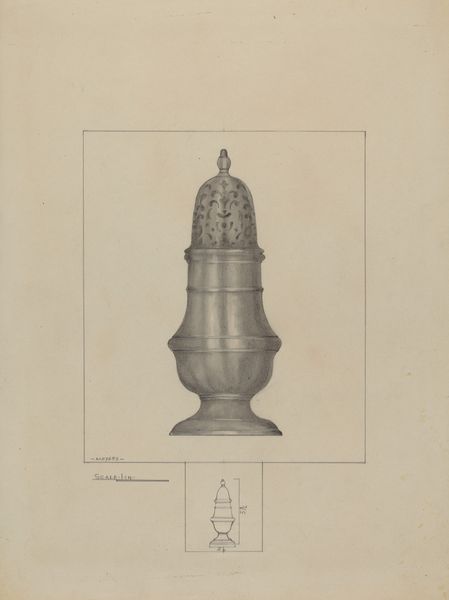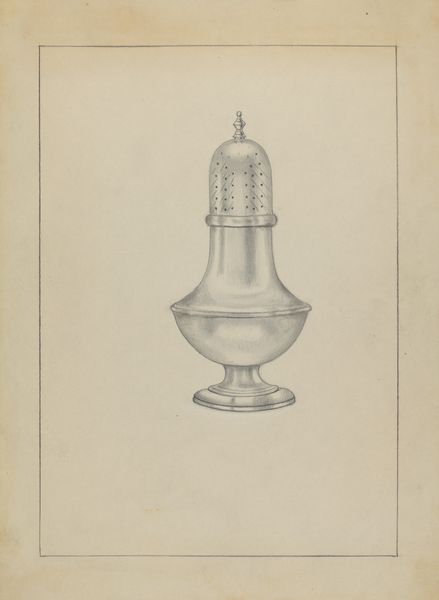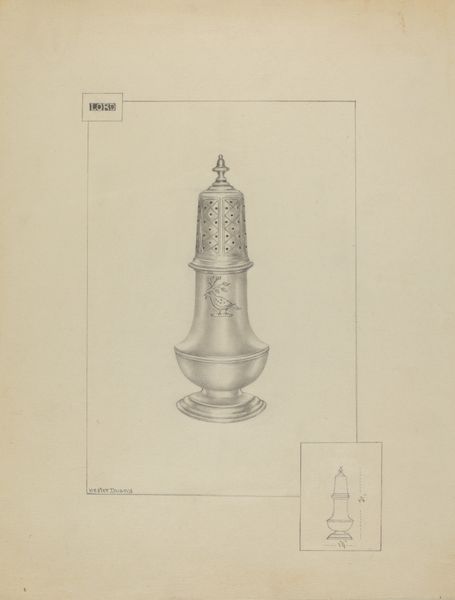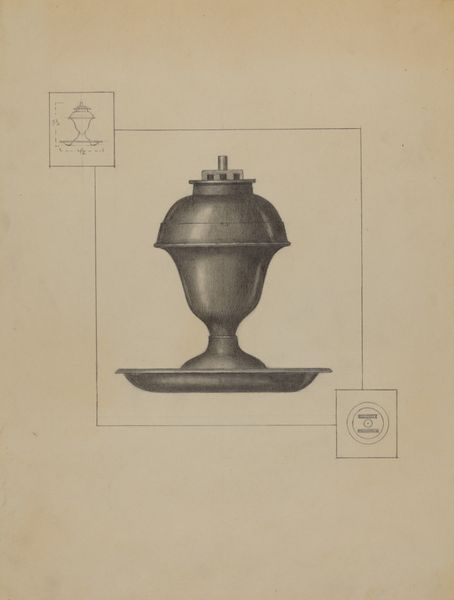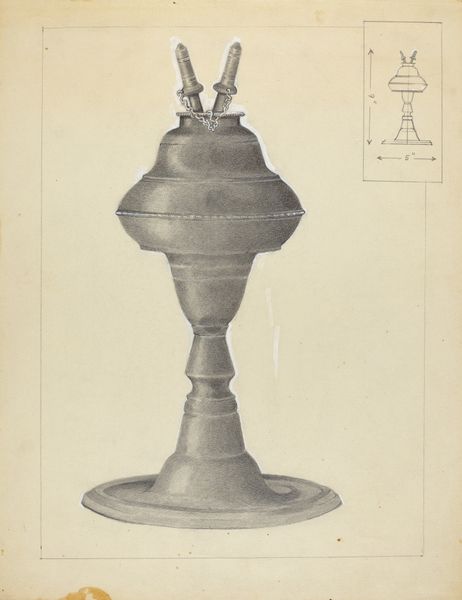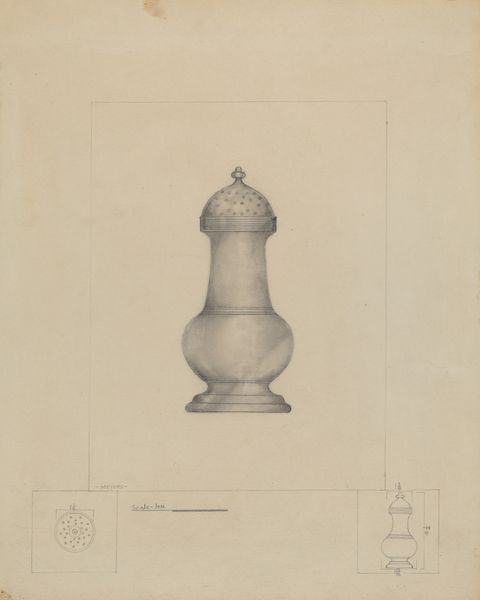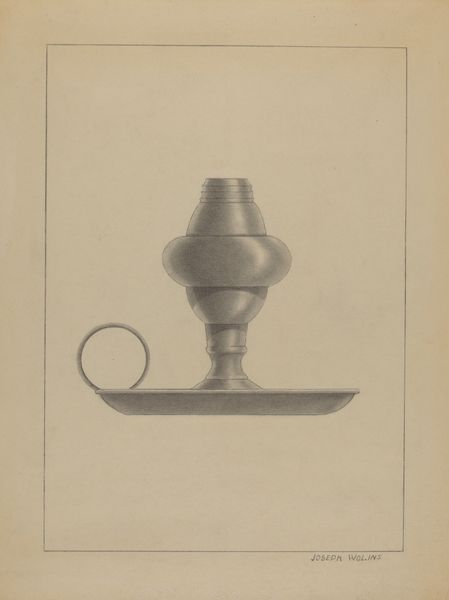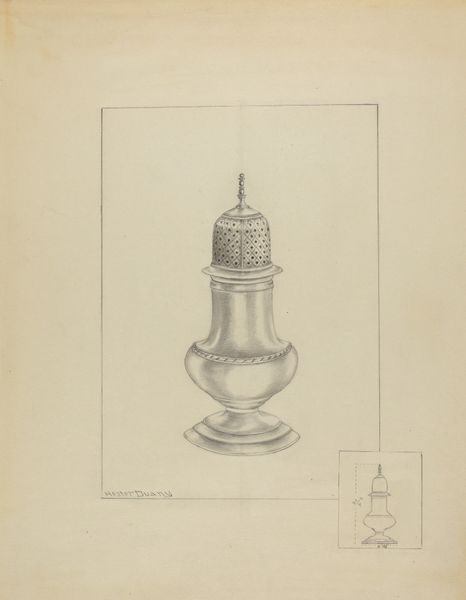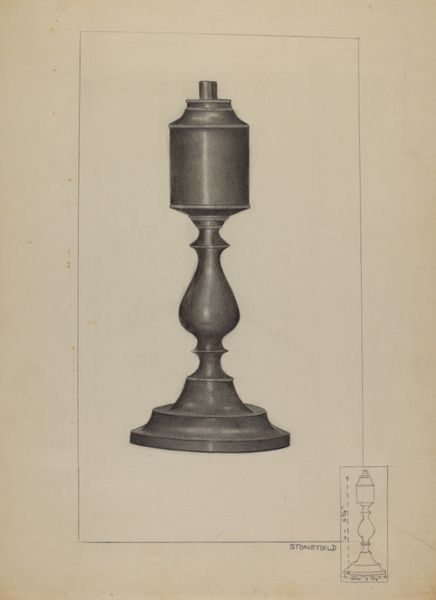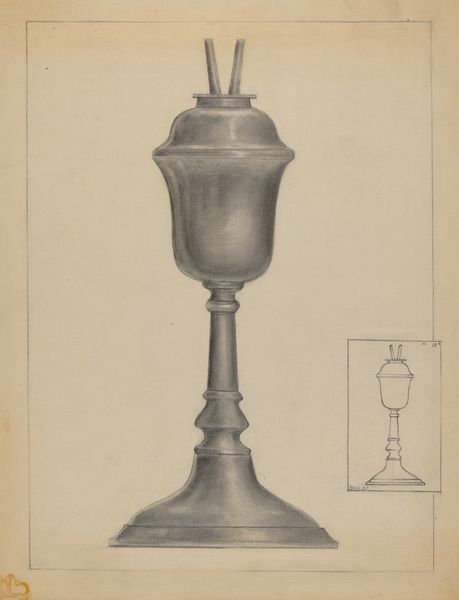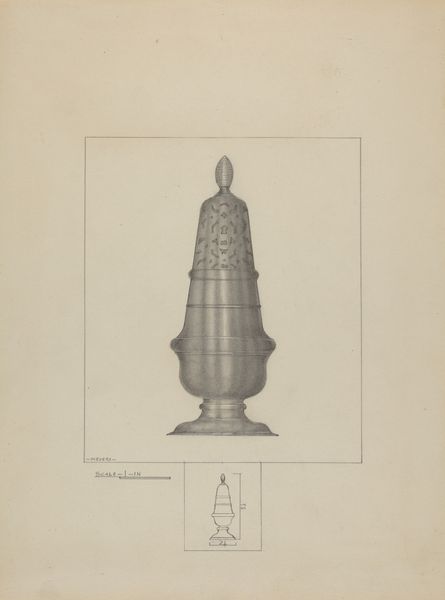
drawing, pencil
#
pencil drawn
#
drawing
#
aged paper
#
toned paper
#
light pencil work
#
pencil sketch
#
old engraving style
#
personal sketchbook
#
pencil
#
sketchbook drawing
#
pencil work
#
sketchbook art
Dimensions: overall: 29.8 x 22.8 cm (11 3/4 x 9 in.) Original IAD Object: 6 7/8" high
Copyright: National Gallery of Art: CC0 1.0
Curator: At first glance, there's an immediate feeling of delicate precision to this drawing. A quiet observation made intimate through subtle details. Editor: Yes, it feels almost ghostly, doesn’t it? A lingering echo of elegance. This is Hans Westendorff’s "Silver Caster," created around 1936. It’s rendered in pencil on paper. Curator: The symmetry immediately grabs me. The meticulous rendering of light across the imagined silver surface feels like the pursuit of some ideal form. Look at the way the floral embellishments cascade down. A subtle dance of opulence and nature. Editor: Westendorff was part of a generation grappling with industrialization. Do you think the sketch's refined character offers a sort of gentle resistance against mass production, a yearning for older craft traditions perhaps? Curator: I see your point, a definite reaching back! These objects functioned within specific rituals and spaces of display, speaking to power and status through their ornament. The monogram detail particularly. Whose story was he trying to tell through that embellishment? Editor: Right. And consider the cultural context. The '30s were fraught with social and economic turmoil, so these delicate drawings offered perhaps an imagined space, an escapist vision of aristocratic life. I wonder, did this design make it into actual production? Was this delicate line work ever translated into real metalwork? Curator: Whether produced or not, I still detect a longing for permanence, doesn't the precise record speaks to enduring cultural values connected to silver as an element, a signifier of wealth and power over time? Even here, it evokes alchemical connections between transformation and status. Editor: It truly provides a fascinating window into not just a specific moment in design history, but a larger socio-economic reality of that era, wouldn't you agree? Curator: Definitely. Examining such everyday items opens a small window onto wider issues of the history, memory, wealth, and art, as symbols. Editor: For me it triggers broader issues concerning social divisions, the relationship between art, industry, and consumer culture. A real eye-opener!
Comments
No comments
Be the first to comment and join the conversation on the ultimate creative platform.
